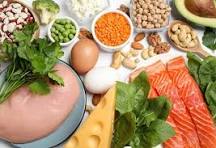
Summary: health wise nuts are great (I know you know) and among them almonds are among the best. Almonds (and other nuts) are an essential part of my diet and are also my go-to snack. I consume much more much than average, especially when craving something sweet—I simply go nuts for nuts (pardon the pun). Nuts in general and certainly almonds contain a lot of the so-called good fats, fiber, proteins and complex (=good) carbs +vitamins and minerals. But also some points of attention (see text below). I tend to overeat almonds and other nuts which is not without risks. See point 11 on 200 grams per day.
1. Why are almonds among the best of all nuts?
Almonds are often praised for their excellent nutrient profile. They are high in vitamin E, magnesium, fiber, and healthy monounsaturated fats. Almonds are also known for their high protein content compared to other nuts. Whether they are the “best” nut depends on what health benefits or nutritional aspects are most important to you. If you want more Omega3 fatty acids, then walnuts are to go for.
2. Raw or roasted, bitter or sweet?
Sweet almonds are the type commonly eaten, as bitter almonds contain amygdalin, which can convert to hydrogen cyanide. If an almond tastes bitter, spit it out! Consuming a bitter one is not deadly, but a few dozens can be. So, only sweet almonds, the type commonly sold, should be consumed. The use of bitter almonds? For cosmetic use and the production of almond oils.
Almonds are sold in four variations, with the first option being the best in my opinion: 1. Unpeeled, slightly roasted; 2. Unpeeled, raw; 3. Peeled, raw; 4. Peeled, roasted (very tasty though).
Unpeeled is preferred because also the peel contains beneficial nutrients. Roasting is better than raw, as raw nuts can pose health risks that roasting eliminates. On the other hand roasting may slightly affect some nutritional aspects but this impact is minimal. Roasting has the additional benefit that it enhances flavor.
3. Almonds for ever (summary of benefits)
Of all the nuts available, almonds provide the most health value per nut and are relatively affordable. We all know about the rich content of healthy fats in nuts, particularly almonds, which are high in monounsaturated and polyunsaturated fats, as well as protein and fiber. This makes almonds an serious energy source, providing moderate, sustained energy that is released over a longer period of time. They also contain fiber, vitamins, and minerals that contribute to heart health, improve cholesterol levels, and reduce inflammation. Almonds have a very low content of saturated fat.
4. Health Risks of eating raw almonds
Eating raw almonds is generally safe, but there are some considerations: Roasting reduces potential contamination (bacteria) and it can significantly reduce enzyme inhibitors that negatively impact the absorption of the almond nutrients and its digestion in your body. For those who are unfamiliar, enzyme inhibitors are molecules. They can decrease or block the activity of enzymes. And what are enzymes? Enzymes are proteins that catalyze biochemical reactions, and their activity is essential for various processes in your body. Especially if you eat a lot of raw almonds, the enzyme inhibitors can even interfere with drug therapy. Almonds are known for the enzyme inhibitors phytic acid and tannins.
5. Almond Flour Compared to Wheat Flour
While wheat flour is cheaper and more versatile, almond flour is gluten-free, lower in carbs, higher in fiber, more nutrient-dense, and contains healthier fats (though higher in calories). Almond flour cookies and cakes are edible. However, I have to admit in my heart that I still prefer the less healthy ones made of wheat flour.
6. Almond Milk vs. Cow’s Milk
The “better” choice depends on individual needs. Almond milk is a plant-based, lower-calorie option suitable for those who are lactose intolerant or vegan. Regular milk offers more protein and other nutritional benefits. Almond milk also contains significantly less saturated fat.
7. Ecological Footprint (not too good)
Almonds have a notable ecological footprint due to their high water usage, estimated at up to 4 liters per almond. So a handful of almonds is easily 100 liters of water :(. However, they have lower greenhouse gas emissions per unit of protein compared to some animal-based foods.
8. Pesticide Impact (minimal)
Despite being subject to serious pesticide use, almonds’ thick shell offers protection to the edible part, unlike some fruits.
9. 100 Grams of Almonds: Nutrition Facts
Most recommendations suggest eating a handful of nuts per day, about 30 – 40 grams. Below is the nutritional profile per 100 grams. I easily do this also to compensate for the fewer carbs I eat.
Calories: Approximately 579 kcal (23 – 29% of daily intake).
Protein: Approximately 21.2 grams (20%+ of daily value).
Fats: Approximately 49.9 grams (71% of the daily value), with 3.7 grams saturated (19% of the 20 grams limit).
Carbohydrates: About 21.6 grams (8% of the daily value), mostly complex carbs.
Fiber: Approximately 40 grams, excellent for digestive health.
10. Additional Nutrients Provided by 100 Grams of Almonds
Vitamin E: 25 mg (171% of daily value)
Magnesium: 270 mg (64 – 87% of daily need)
Calcium: 269 mg (27% of daily value)
Iron: 3.7 mg (46% for men, 21% for women of daily need)
Phosphorus: 481 mg (69% of daily value)
Potassium: 733 mg (21 – 29% of daily value)
11. And what if you eat 200 grams of nuts/almonds per day?
For me this was an important question. I assumed that nuts are so healthy that you can eat them in almost unlimited quantities (apart from the calorie intake of course). Unfortunately this is not true. There are some serious health risks if you eat too much no matter how healthy they are. It is difficult to define “too much”, but in my experience 200 grams is too much. I stick/try to stick to 100 grams per day.
Eating a large amount of almonds, such as 200 grams per day, can have several potential negative impacts:
1. Consuming 200 grams of almonds provides about 1,158 kcal, over 50% of the daily intake. In itself this is not the biggest problem.
2. While almonds are high in healthy fats, 200 grams would provide about 100 grams of total fat, including roughly 7.4 grams of saturated fat. This is over the recommended limit of 70 grams of total fat and close to the limit of 20 grams of saturated fat. The so-called good fats are good for you but also here not too much. My mother was right.
3. The high fiber content (about 80 grams in 200 grams of almonds) could lead to digestive discomfort, including bloating, gas, or diarrhea, especially if your body isn’t used to such high fiber consumption. It is embarrassing but I have to admit that this is correct.
4. Phytic acid, present in almonds, can bind to minerals like iron, zinc, and calcium and reduce their absorption. Consuming large quantities could exacerbate this effect, potentially leading to mineral deficiencies over time. I am no specialist, but it sounds serious and something to avoid.
5. Almonds are a common allergen. Consuming large quantities could increase sensitivity in those with mild intolerances and potentially trigger allergic reactions.
6. Almonds contain oxalates, which can contribute to kidney stone formation in susceptible individuals if consumed excessively.
12. Most important; how to roast and enhance the taste
1. Preheat the oven to 175°C.
2. Place a single layer of almonds on a baking sheet lined with paper.
3. Use the oven’s fan and bake for 10 minutes, turning halfway through.
4. Optionally, add salt and olive oil for flavor.
Roasting at too high a temperature or for too long can cause the formation of unwanted compounds, so be cautious and keep the temperature at 175..
Nuts in general and almonds in particular contribute to a happy, healthy, long and tasty life.
Enjoy!
Robert, your health friend

shipwreck on Klein Curacao






